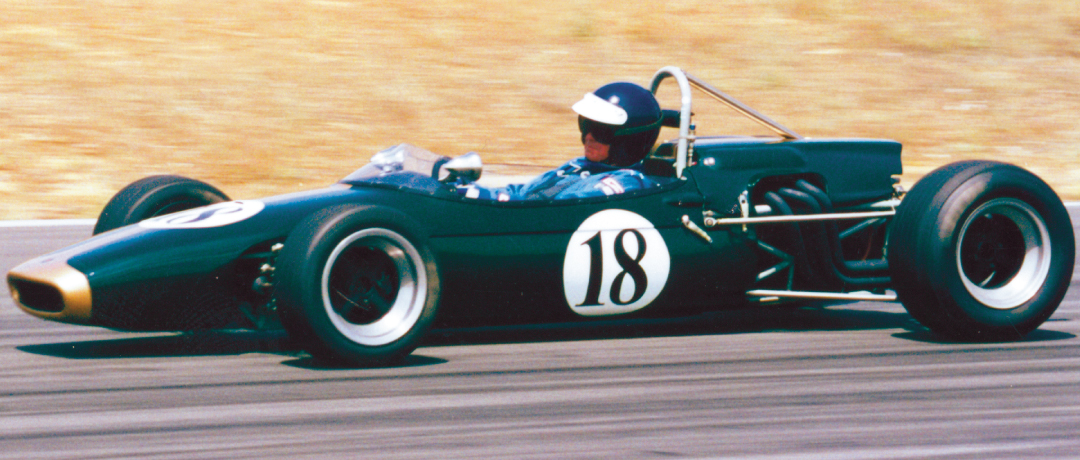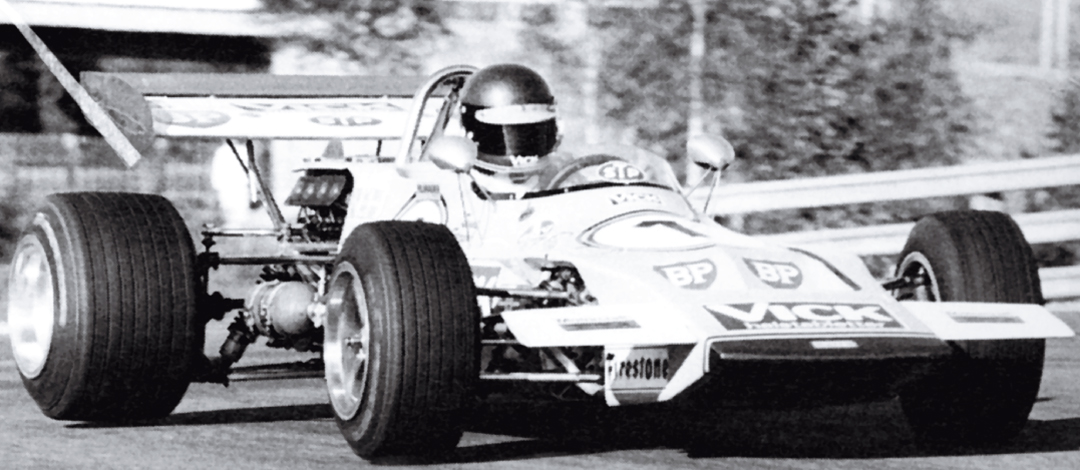In this guide we are going to cover the popular single-seater series of Formula B, Formula Atlantic and Formula Two.
From 1964 to 1978, these racing categories and the flat-bottomed formula cars manufactured to compete in them served as a stepping stone to the upper echelons of open-wheeled racing, be it SCCA, USAC or Formula 1.
Formula B was primarily a U.S. series governed by the SCCA during the 1960s. These cars had tubular chassis, and were powered by the production-based, 4-cylinder, carbureted 1600-cc Lotus twincam engine, which originally only produced 140 bhp. With development, these engines now produce 195 bhp.
Formula Atlantic evolved out of Formula B in the early 1970s. Although this series raced outside the U.S., it was very popular in the U.S. These cars had a monocoque chassis and were powered by the 4-cylinder, carbureted 1600-cc Cosworth BDD engine originally producing 200 bhp. These engine, now produce 220 bhp.
Formula Two was an international series, with a European championship as well as the Temporada series in South America. It was governed by the FIA. From 1964–66, these cars had tubular chassis and utilized highly developed 4-cylinder fuel-injected 1,000-cc Cosworth and Honda engines producing 125 bhp.
F2 cars from 1967–’71 had both tubular and monocoque chassis and were powered by the multi-valve, gear driven, four cylinder, fuel-injected, 1,600-cc Cosworth FVA engine, which originally produced 218 bhp. These engines now produce 250 bhp. The FVA engine won every F2 championship from 1967–’71. F2 cars from 1972–’78 were a monocoque construction, powered by 4-cylinder, multi-valve, fuel-injected 2,000-cc Cosworth, Hart, BMW and Renault engines producing 300bhp.
Although all the series provided competitive racing, Formula Two always produced more technically advanced cars. F2 teams were often connected to an F1 team and, as a result, the many technical innovations such as aerodynamic aids and the slick-racing tire were immediately seen on the F2 car.
From these single-seater formulas, Formula Two in particular, came many a future world champion: Jack Brabham, Emerson Fittipaldi, Denny Hulme, Niki Lauda, Ronnie Peterson, Jochen Rindt, Keke Rosberg and Jackie Stewart.
Today there is a Monoposto Registry which keeps a watchful eye over these single-seater cars and the classes in which they race.
| Make | Model | Level III | Level II | Level I |
| Brabham | BT10 | $25,000 | $30,000 | $35,000 |
| BT16 | $25,000 | $30,000 | $35,000 | |
| BT18 | $30,000 | $35,000 | $40,000 | |
| BT21 | $35,000 | $40,000 | $45,000 | |
| BT23C F2 | $70,000 | $80,000 | $90,000 | |
| BT29 FB | $40,000 | $50,000 | $60,000 | |
| BT30 F2 | $70,000 | $80,000 | $90,000 | |
| BT35 FB/FA | $30,000 | $35,000 | $40,000 | |
| BT36 F2 | $70,000 | $80,000 | $90,000 | |
| BT38/BT40 F2 | $40,000 | $45,000 | $55,000 | |
| Chevron | B15B | $30,000 | $40,000 | $50,000 |
| B17B | $30,000 | $40,000 | $50,000 | |
| B18 | $30,000 | $35,000 | $40,000 | |
| B20 | $30,000 | $35,000 | $40,000 | |
| B27/B29 FA | $30,000 | $35,000 | $40,000 | |
| B34 FA | $35,000 | $40,000 | $45,000 | |
| B35 F2 | $40,000 | $50,000 | $60,000 | |
| B40 F2 | $40,000 | $50,000 | $60,000 | |
| Lola | T60/61/62 | $30,000 | $35,000 | $40,000 |
| T100/102 | $35,000 | $45,000 | $55,000 | |
| T360 FA | $30,000 | $35,000 | $40,000 | |
| T460 FA | $25,000 | $30,000 | $35,000 | |
| Lotus | 32 | $40,000 | $45,000 | $50,000 |
| 41B | $35,000 | $40,000 | $45,000 | |
| 48 F2 | $50,000 | $60,000 | $70,000 | |
| 59B | $35,000 | $45,000 | $50,000 | |
| 69 FB | $40,000 | $50,000 | $60,000 | |
| 69 F2 | $70,000 | $80,000 | $90,000 | |
| March | 712 F2 | $55,000 | $65,000 | $75,000 |
| 722 F2 | $45,000 | $55,000 | $65,000 | |
| 762 F2 | $45,000 | $55,000 | $65,000 | |
| 772/782 F2 | $45,000 | $55,000 | $65,000 | |
| 75B/76B | $35,000 | $40,000 | $50,000 | |
| 77B/78B | $35,000 | $40,000 | $50,000 | |
| McLaren | M4 FB | $40,000 | $50,000 | $60,000 |
| M4 F2 | $50,000 | $60,000 | $75,000 | |
| Merlyn | Mk7/9 | $25,000 | $30,000 | $35,000 |
| Ralt | RT1 Atlantic | $45,000 | $50,000 | $55,000 |
| Surtees | TS10 | $45,000 | $55,000 | $65,000 |
| TS15 | $45,000 | $55,000 | $65,000 |
1966 Brabham BT18 Formula Two

1971 March 712 Formula Two

Criteria Used For Assessing Valuations for this Guide:
- Degree of Originality
- Overall Condition, Restoration
- Technology, Design, Coachbuilder
- Production Numbers/Rarity
- Competition History
- Ownership History, Documentation
- Modern Event Eligibility
Regional Variances
The prices stated in this guide are based on U.S. values. The values of historic racing cars can vary as much as 25%-35% in other countries, depending on local market appeal, currency rates, import duties, and VAT. Most of the time, we are able to document known sales or closed escrows, as they say in real estate. When this is not possible, a logical estimate of the car’s value is given, based on its sales history and relationship to cars of its type.
The prices stated in this guide are based on U.S. values. The values of historic racing cars can vary as much as 25%-35% in other countries, depending on local market appeal, currency rates, import duties, and VAT.
LEVEL |
VALUATION CATEGORIES |
|---|---|
I |
The best combination of all criteria. |
II |
Satisfies mid-range of criteria. |
III |
In need of restoration. Meets only a few points of criteria |




